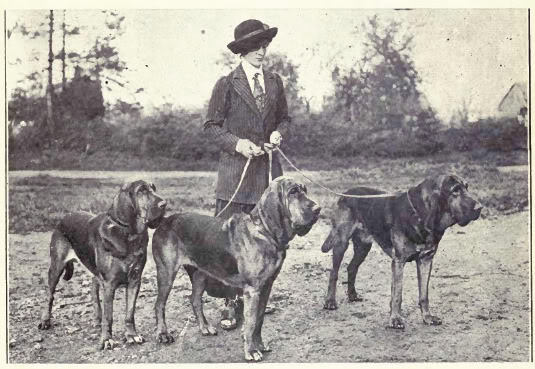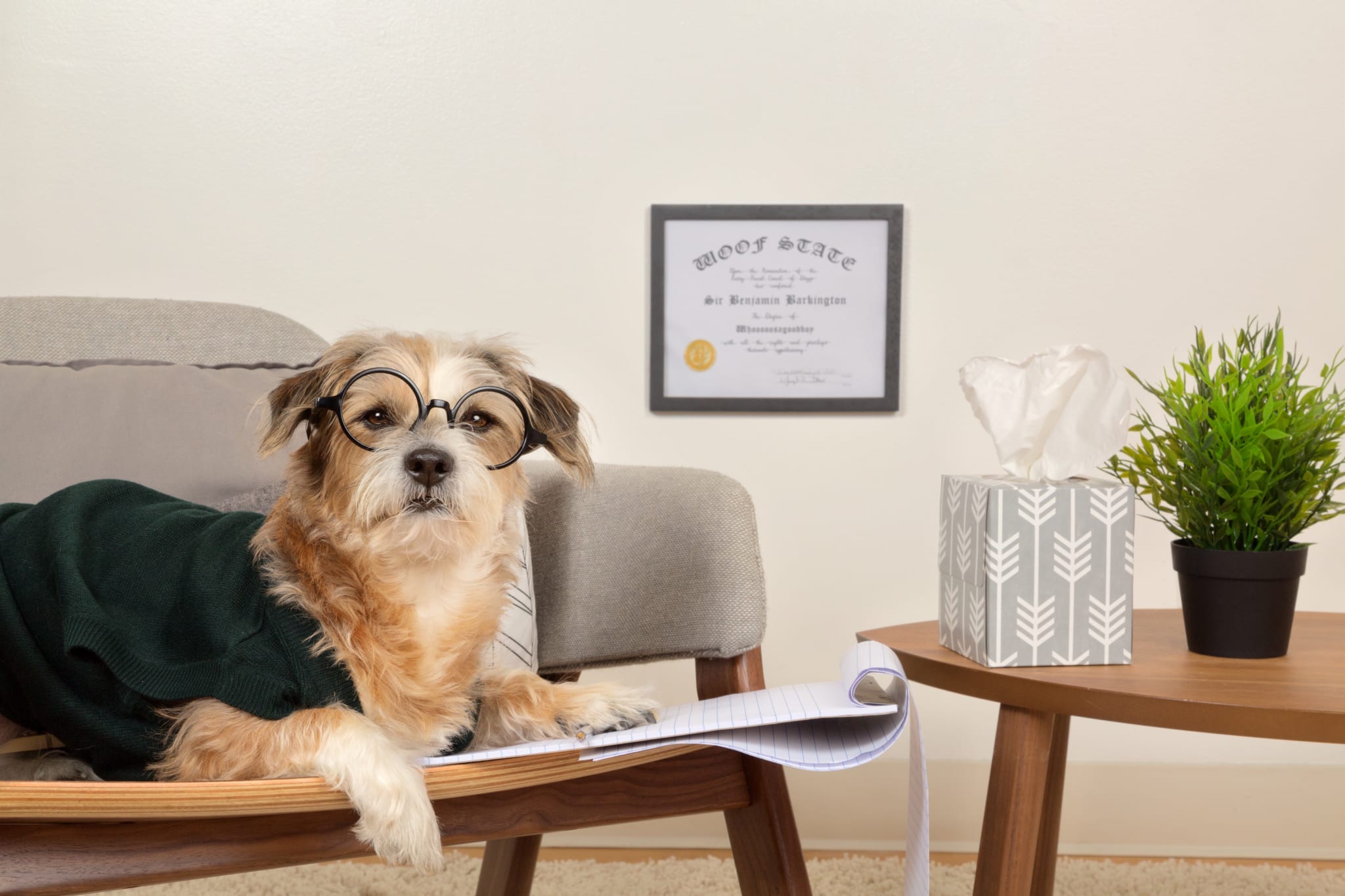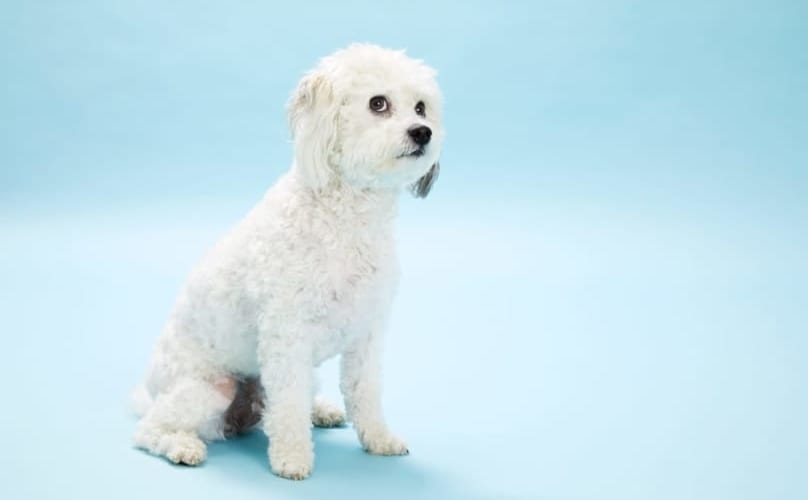Man’s Best Friend has held that title for a long time now — somewhere between 18,000 and 32,000 years!
Since their partnership with humans, dogs have been selectively bred and thus, undergone a number of physical changes. It wasn’t until the 19th century that people began keeping track and classifying them into different breeds; these records help us compare our pups today with their great-great-great-grandmoms and dads.
W.E. Mason’s Dogs of all Nations was written in 1915 as a presentation of all purebred dogs of the time. Looking through it, some breeds are uncanny, some look completely different, and some you’ve never even heard of (Bavarian Limer?)
Here are 11 doggies who would definitely recognize their ancestors if they met!
1. Fox Terrier
The Smooth Fox Terrier was the first breed of its family to receive official recognition by The Kennel Club in 1885.
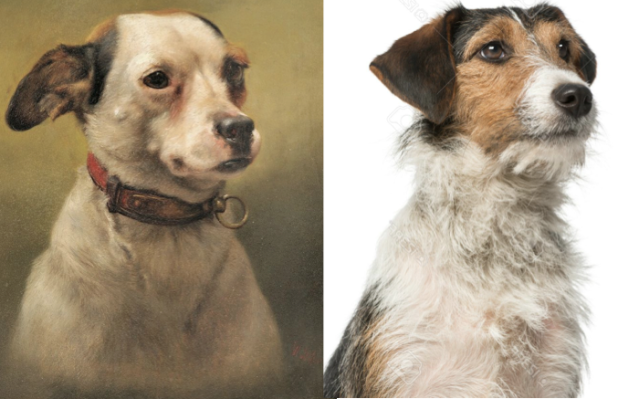

Although these two pups look closely related, they have little in common. In the 1800’s, Fox Terriers were bred to chase foxes out of holes in the ground. Today, they’re highly energetic family companions and successful show dogs.
2. Staffordshire Bull Terrier
A.k.a. Staffies. A.k.a. The fifth most popular breed in the world. The implementation of modern animal welfare laws has shaped these dogs more than anything.
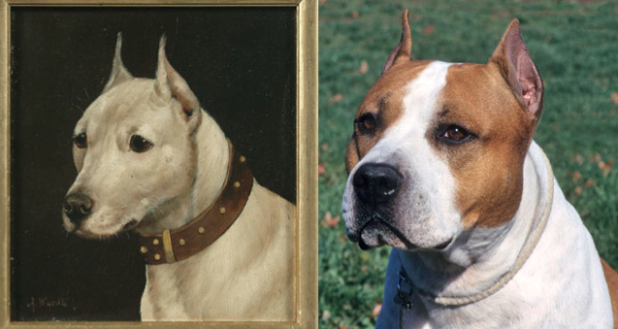

They’re still as courageous, intelligent, and tenacious as they were 200 years ago when their strength and skills were constantly put to the test, and are now considered highly respected show dogs.
3. English Bulldog
The differences between the 1901 Bulldog and the modern Bulldog are a little easier to spot at first glance: shorter legs, a fuller chest, a broader face, more wrinkles around the snout and forehead, and a bigger butt? (who’s complainin’?)
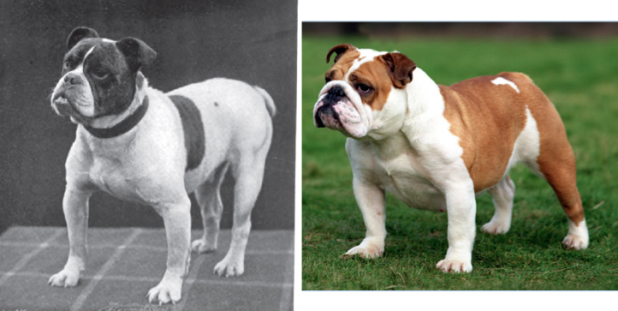

4. Bedlington Terrier
Contrary to popular belief, Bedlington Terriers didn’t evolve into what are commonly known today as Lambs. The former rat-hunters now have a much more pronounced arch on their backs, presumably due to crossings with Whippets.
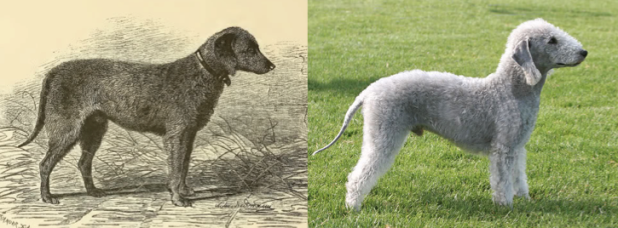

They went from avid hunters (1895 on the left) to popular show dogs (modern day on the right) in only a couple of years!
[bp_related_article]
5. Bull Terrier
Although the Bull Terrier has lost about 8 inches of height and experienced a complete makeover in face structure since the 1860’s, they have remained T.V stars throughout.
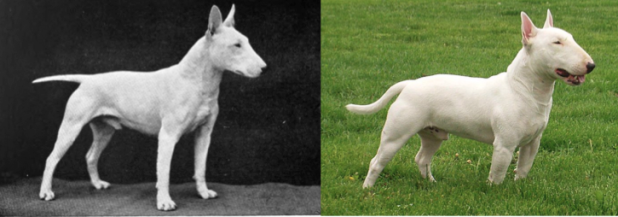

Patsy Ann, the Bull Terrier from Juneau Alaska, quickly became her town’s “official greeter.” Almost eighty years later, Bullseye, Patsy Ann’s descendant, was elected mascot for America’s second largest discount retailer, Target. The humility in her genes is evident below as she takes the time to pose with a big fan.*
*BarkPost in no way endorses the application of paint to dogs.
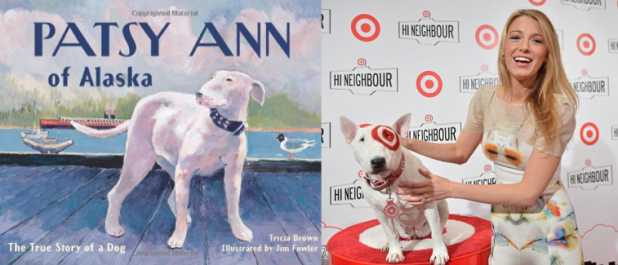

6. Poodle
Beauty standards have changed even for those who don’t dress themselves. What was once considered an efficient haircut to help Poodles swim better is now a necessity for when they’re competing in dog shows.
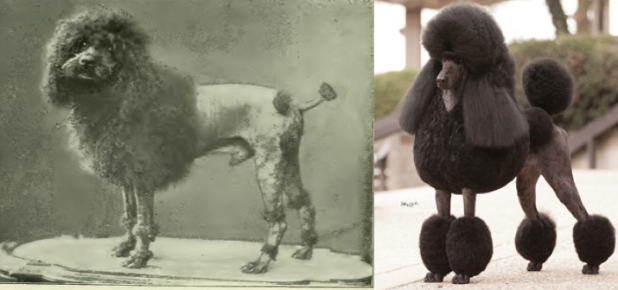

The “Continental Trim” traditionally helped keep these water pups afloat when by trimming the lower half of the body, their chest and head hair was kept long to protect their organs from the cold, and the pom-poms around their ankles helped protect them from rheumatism. While the look seems a little tidier today, we can still say that back in 1897, they tried.
7. Great Dane
The real life Scooby Doo has a past that doesn’t involve solving mysteries. Instead, the giant doggies hunted Europe’s wild boar in the 14th century.
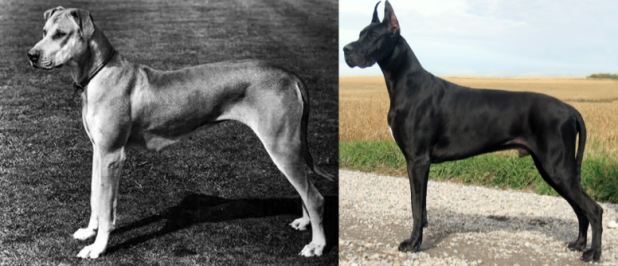

Danes used to be significantly shorter, stockier, and more muscular than they are today. We like to think of them as the gentlest of giants.
8. Neapolitan Mastiff
Gravity did a number on the Neo, a lumbering pup whose history is said to date back about 5,000 years when they were used as guard dogs.
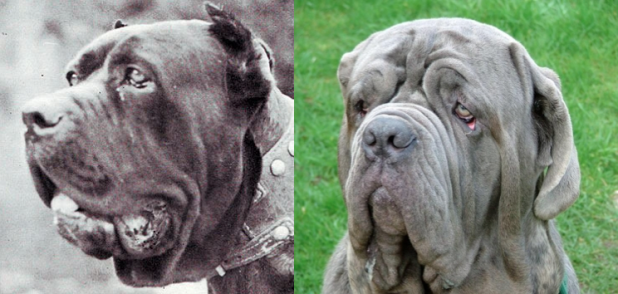

Although the Neos have always been a massive dog characterized by loose skin, these softies are much flabbier today than they were back then.
9. St. Bernard
These aptly named Saints were search and rescue experts in the Alps during the 1700’s. Today they do a different kind of saving, specifically as service dogs helping people with autism.
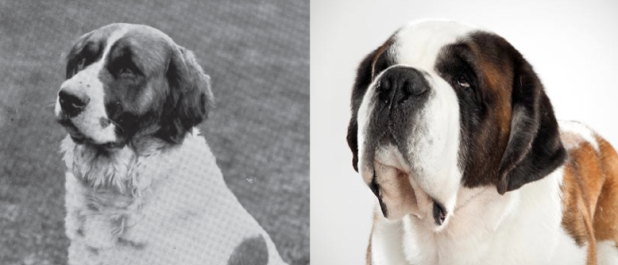

In the early 1800’s severe winters and avalanches took many Bernies with them; so breeders used Newfoundlands in an attempt to preserve the St. Bernard. This resulted in the dog we know today. The longer fur they inherited would freeze and weigh them down, so they lost their use for rescue missions, but are way bigger and more cuddly!
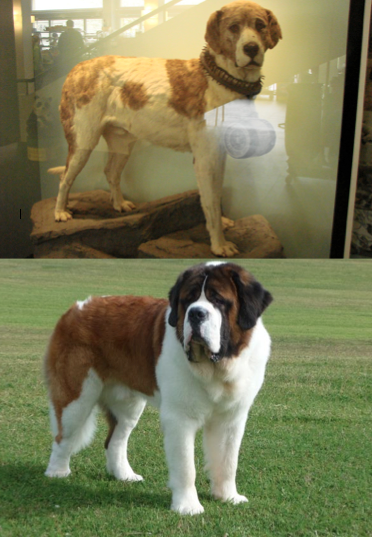

10. Bloodhound
Either this artist from 1563 was sketching from memory, or the English Bloodhound has come a long way since its earliest known published picture.
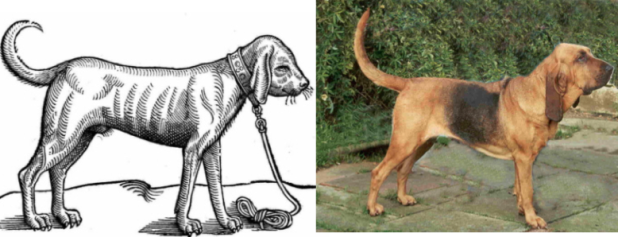

It’s believed that the sketch was done from life and under the supervision of John Caius, who wrote a study of British dogs in his time. Bloodhounds have a reputation for being the breed with one of the most complicated and confusing histories ever.
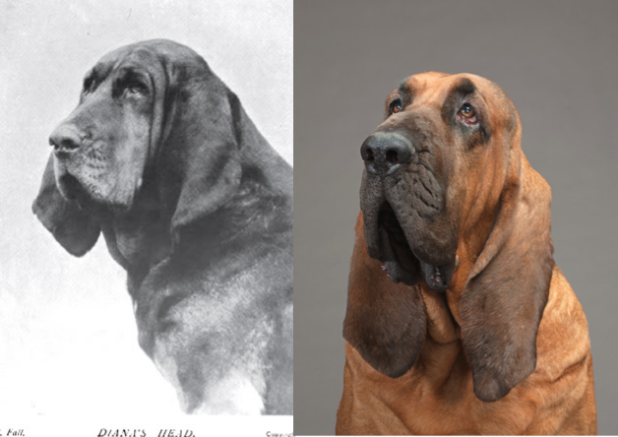

Their precise origin and evolution are as debatable as they are obscure. And although their ears are much longer and snout much droopier, their tracking effectiveness still remains unmatched.
11. Basset Hound
A close runner-up to the Bloodhound is the Basset Hound, a breed whose sense of smell is only second to the tracking master. Which makes sense, since they both originated from the same St. Hubert’s Hound, and look like cousins.
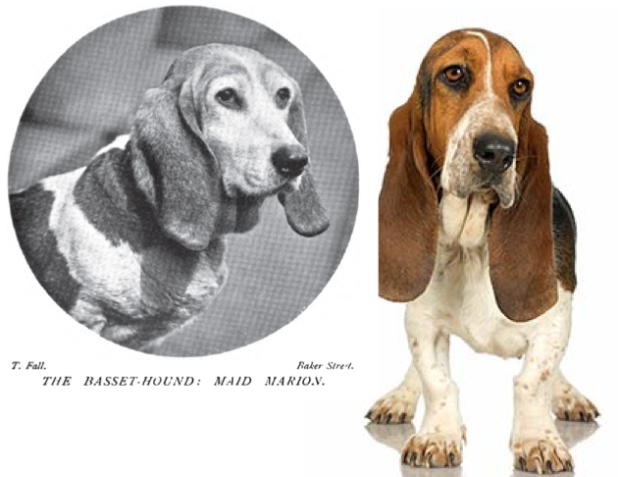

“Basset” means low to the ground, a characteristic they’ve always had. And although they’re still averaging 13 inches in height, it seems like every generation is becoming more “Basset-y.”


At least they’ve kept their beautiful markings and unparalleled personalities!

